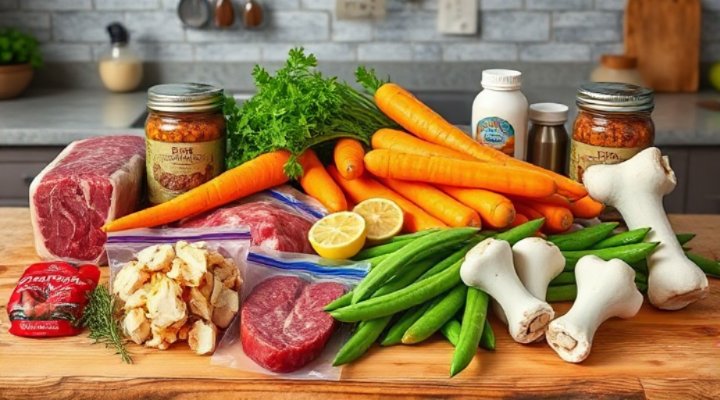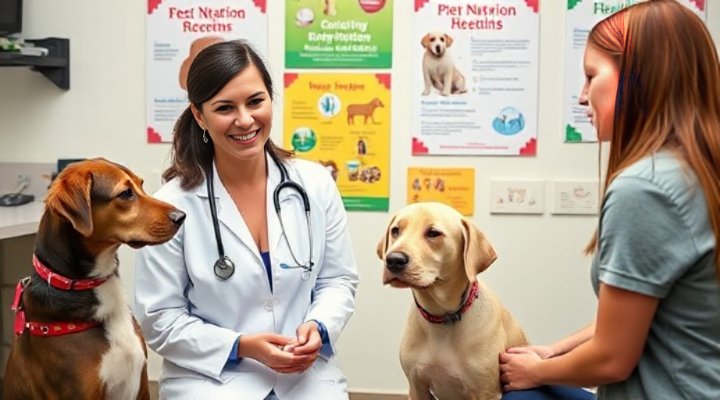Raw dog food diets have surged in popularity in recent years, with many pet owners swearing by the benefits they’ve seen in their canine companions. However, before making the switch to raw feeding, it’s crucial to understand both the potential advantages and the possible risks involved. In this comprehensive guide, we’ll explore everything you need to know about raw dog food benefits and risks.
What Is Raw Dog Food?
Raw dog food, often called the BARF diet (Biologically Appropriate Raw Food or Bones and Raw Food), typically consists of uncooked meats, bones, fruits, and vegetables. This approach aims to mimic what dogs might eat in the wild. While some pet owners prepare raw meals at home, others opt for commercially prepared raw dog food options that meet nutritional standards.

The Benefits of Raw Dog Food
Improved Digestion
Many proponents of raw diets report that their dogs experience better digestion. The natural enzymes in raw food may help break down nutrients more efficiently, leading to smaller, firmer stools. This aligns with what we know about canine digestion from our article on managing dog behavior – diet often affects more than just physical health.
Healthier Skin and Coat
The omega-3 fatty acids found in raw meats and fish can contribute to a shinier coat and healthier skin. Many owners notice a significant improvement in their dog’s appearance after switching to raw food.

Dental Health Benefits
Chewing on raw bones can help clean your dog’s teeth naturally, potentially reducing plaque buildup and improving overall dental health. However, it’s important to choose appropriate bones to avoid dental damage.
Increased Energy Levels
Some dogs on raw diets appear more energetic and alert, possibly due to the high-quality protein and lack of processed ingredients found in many commercial kibbles.
The Risks of Raw Dog Food
Bacterial Contamination
Raw meat can contain harmful bacteria like Salmonella and E. coli, which pose risks to both pets and humans. Proper handling and storage are essential, as emphasized by the FDA’s guidelines on raw pet food.

Nutritional Imbalances
Creating a nutritionally complete raw diet requires careful planning. Without proper knowledge, homemade raw meals might lack essential nutrients or have improper calcium-to-phosphorus ratios.
Potential for Bone Hazards
While bones can be beneficial for dental health, they can also splinter and cause choking or internal injuries. Always supervise your dog when feeding bones and choose appropriate sizes.
Higher Cost and Preparation Time
Raw diets often cost more than commercial kibble and require significant preparation time. This might not be practical for all pet owners, especially those with busy schedules.

Making an Informed Decision
Before switching your dog to a raw food diet, consult with your veterinarian or a canine nutritionist. They can help assess whether this diet is appropriate for your dog’s specific needs, age, and health status. Remember, what works for one dog might not be ideal for another – just as we discuss in our guide on finding the right training approach for your pet.
Transitioning to Raw Food
If you decide to try raw feeding, transition gradually over 7-10 days to avoid digestive upset. Start by mixing small amounts of raw food with your dog’s current diet, slowly increasing the proportion of raw food.

Alternatives to Consider
If the risks of raw feeding concern you but you want to provide high-quality nutrition, consider these alternatives:
- High-quality commercial kibble with limited ingredients
- Gently cooked homemade meals
- Freeze-dried raw food (which undergoes pathogen reduction)
- A combination approach of kibble and fresh foods
For more information on balanced canine nutrition, check out resources from Tufts University’s veterinary nutrition program.
Final Thoughts
Raw dog food offers potential benefits but comes with significant responsibilities. Whether you choose to feed raw or opt for another high-quality diet, the most important factor is ensuring your dog receives complete and balanced nutrition. As with any aspect of pet care, from training to nutrition, your dog’s individual needs should guide your decisions.
Related Keywords: raw dog food diet, benefits of raw feeding for dogs, risks of raw meat for dogs, homemade dog food recipes, commercial raw dog food brands, balanced canine nutrition, transitioning to raw dog food, BARF diet pros and cons
